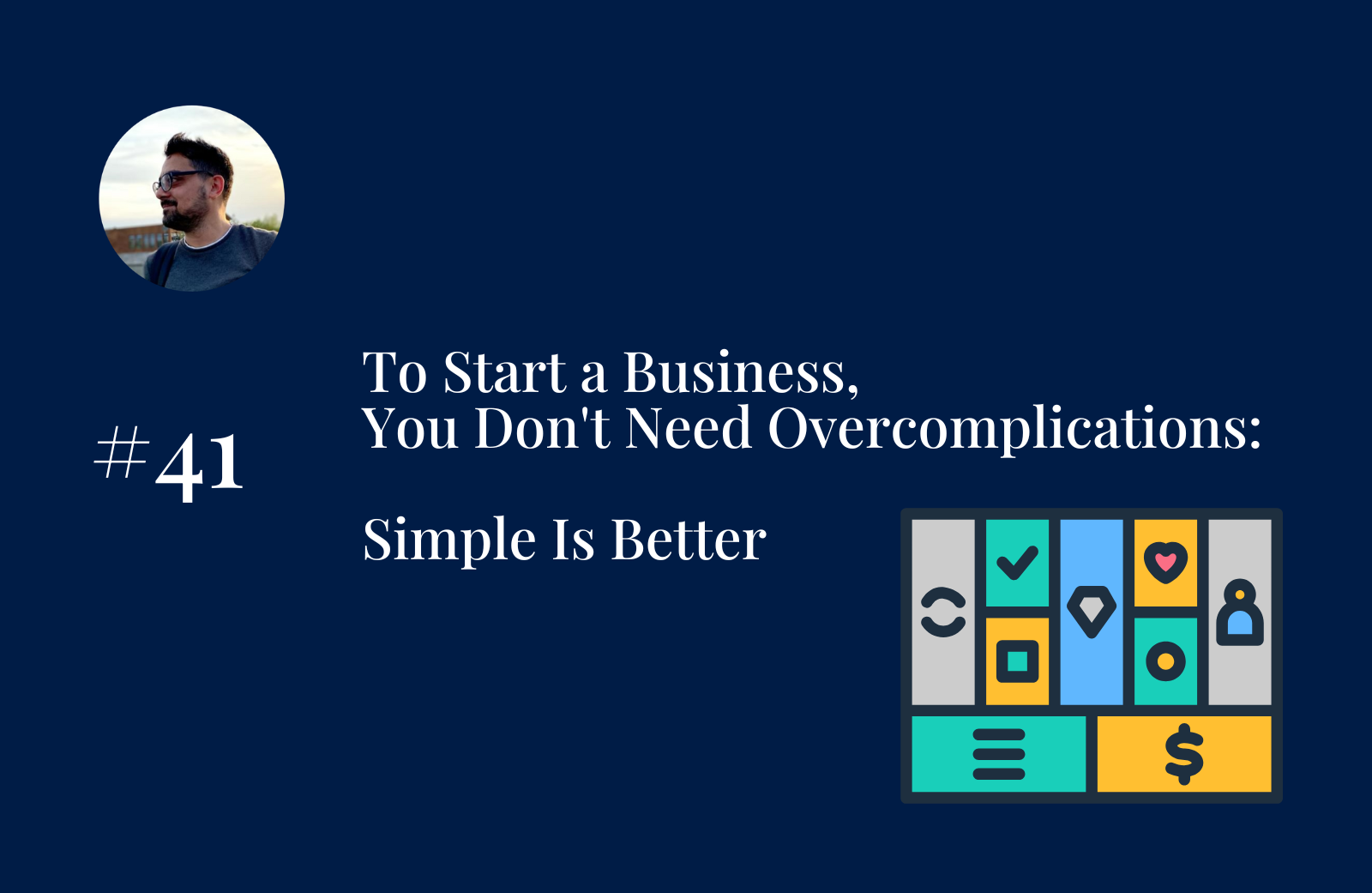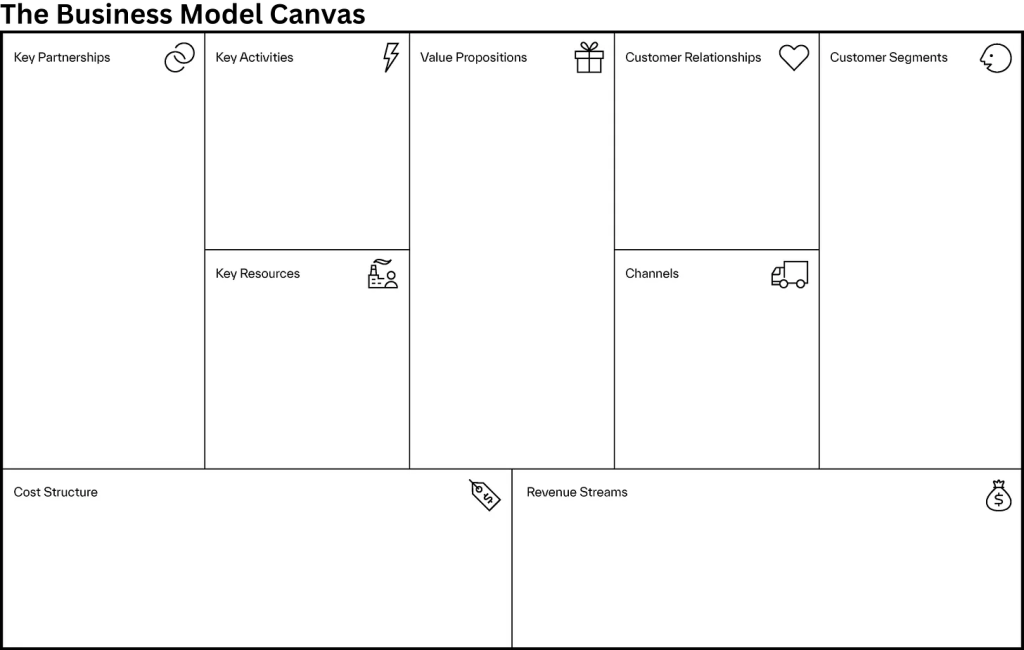
09 Apr Start a Business – Business Model Canvas
Apr 9, 2025
Throughout the last few weeks of the series “Start a Business,” we covered the following topics:
- Find a Real Customer’s Problem and a Solution to That Problem: Identify a genuine issue customers face and propose a viable solution.
- Identify Market Fit: Determine if your solution has a market fit, meaning a sufficient number of people would purchase it to generate sustainable, long-term revenue.
- Business Model: This answers the question of how exactly your business will earn money.
- Customer Profile: This answers the question of who your customer is.
- Interviews with Customers: An essential procedure where we interview customers to gain a clear understanding of their needs and how they think.
- In Customer’s Shoes: This process involves putting ourselves in the customer’s shoes, allowing us to better understand our own product and business.
- Revision: This involves revisiting and refining all the previous steps. This iterative process may lead us to adapt our product or service to better match market needs, thereby increasing revenue streams.
- One-Sentence Pitch: Once we have a clear understanding of what we sell and to whom, we’re ready to formulate a one-sentence pitch. This serves as a stress test for our understanding of our business. If you cannot explain your business in one sentence, you may not fully understand what you’re doing.
- Value Proposition Canvas: This step complements “In Customer’s Shoes” and provides an even deeper understanding of what the customer needs and expects from our product.
After going through all nine steps listed above, we are ready to digest the information and incorporate it into a business plan. This plan, once read by anyone, should clearly convey what we do, who buys from us, what resources we need to build our product, what are our expenses, how we’ll earn money, and so forth.
Simplicity
When it comes to business planning, I love simplicity. Complications, especially when starting a new business, can trick us into thinking we are making progress. More often than not, we may get lost in numbers, tons of data, and an extensive list of unnecessary tasks. This can give us the false impression that we have a business, when in fact, we may become entangled in complexities, slowing down our decision-making process, and eventually leading to wrong decisions or no decisions at all.
This is why I really like the approach of the Business Model Canvas. Simply put, the Business Model Canvas is a one-page business plan that allows you to understand the core idea of the business, what it does, and how it earns money at a glance.
There are a couple of advantages it offers:
- Simplicity: It’s simple and easy to understand.
- Adaptability: Because it is simple, it can be revised and changed quickly.
Don’t forget one simple fact: by starting a business, your main goal is to build a product or a service that can be adapted as quickly as possible to the customer’s needs in order to find a market fit and generate sustainable long-term revenue. In reality, that’s all you care about. Therefore, the features I’ve mentioned above — simplicity and adaptability — are must-have features, making the Business Model Canvas the perfect candidate for our purposes.
Business Model Canvas
The Business Model Canvas looks like this:

You can download a copy of the canvas from here – “Business Model Canvas”. If you have a Google account, you can directly copy the file and fill it in.
The canvas contains nine sections. Let’s review them in the order we will fill them in, as the order is important:
- (1) Value Proposition: Here, you need to describe two things. First, what functional benefits does your product or service bring to the customer? This focuses on the practical side of what you offer. Second, what is the overall experience you provide to the customer? This section includes social and emotional benefits. If you’re unsure what to write here, read the article “Value Proposition Canvas”.
- Revenue of the Business: This section includes four sub-sections directly affecting the revenue.
- (2) Customer Segments: Here, we describe the profile of our customer. We already did that in the article “Customer Profile”.
- (3) Channels: Here, we list all channels we’ll use to reach our customers. These can include physical stores, social media, ads, etc. You need to be specific. Simply adding the key phrase”social media” is vague, as there are different types of social media, each serving completely different purposes. For example, if you mention Instagram, you should understand why you chose that platform over, say, LinkedIn.
- (4) Customer Relationships: In this sub-section, you need to describe how exactly you attract customers and how you keep them long-term. Do you use a bonus system, referral programs, etc.?
- (5) Revenue Streams: Here, you need to describe all revenue streams. What does the customer pay for, and how is your business going to earn money? Adding numbers is desirable.
- Costs of the Business: This section includes four sub-sections directly affecting your business’s expenses.
- (6) Key Resources: What are the key resources you need to run your business? These can include physical stores, vehicles for transporting goods, etc. List the essential ones.
- (7) Key Partners: Every business has at least one essential partner. For example, if I sell products online, one of my key partners is the delivery company (e.g., DHL).
- (8) Key Activities: List all key activities you have to perform to start the business and those you have to perform regularly when running the business. You need to have a clear idea of the actions required from your side. For example, one key activity for an online store is signing a long-term contract with the delivery company, providing discounts for deliveries.
- (9) Cost Structure: Here, you need to list all expenses your business will incur. At the end of the day, subtracting the costs from the revenue gives you the net revenue stream, which must be positive in the long term to make starting your business viable.
Iterations
Preparing the first version of your business model canvas is a good start. Don’t worry if it is not perfect, as you will likely change it multiple times.
In fact, I strongly recommend creating a first version of your business model canvas, getting a proper night’s sleep, revising it, and writing a second version. Do this multiple times until there is nothing more to add or remove.
That is the moment when you can be confident in starting to build your business. However, be prepared to adapt the business model canvas repeatedly when you enter the market. The market will teach you more lessons than you might expect.
Don’t be discouraged. Being an entrepreneur means being constantly open to adaptation and experimentation.
